Whatever crop the farmer specializes in, he will definitely need potassium nitrate. This universal fertilizer is indispensable for growing vegetables, grapes, fruit trees, for flower beds and seeded lawn grass plots.
However, despite its indispensability, this fertilizer has a number of features of its application. Let's take a closer look.
1 Saltpeter properties
Potassium nitrate is the most common the name of a substance with the chemical formula KNO3. According to the generally accepted nomenclature in chemical science this compound is called potassium nitrate, potassium nitrate. In everyday life, the names Indian or potassium nitrate may occur.
The needles are colorless, but may appear white with a grayish tint when passing through the grinder. The substance is highly soluble in water and provides plants with nitrogen and potassium necessary for growth.
Potassium and sodium nitrate, although similar in appearance, are very different in hygroscopicity. Potassium nitrate is not inclined to clump, but if this happens, you can dry the fertilizer on a battery for grinding and break large pieces mechanically.
1.1 What is it used for?
Gardeners know potassium nitrate as an excellent fertilizer for all types of crops. A two-component additive allows you not to make separate potassium and nitrogen supplements, especially since they block the absorption of each other.
The use of potassium nitrate is advisable when an excess of nitrogen in the soil is avoided, as well as for feeding crops that do not respond well to fertilizers with chlorine (potatoes, currants, grapes, tomatoes).
Potassium nitrate performs at least eight functions:
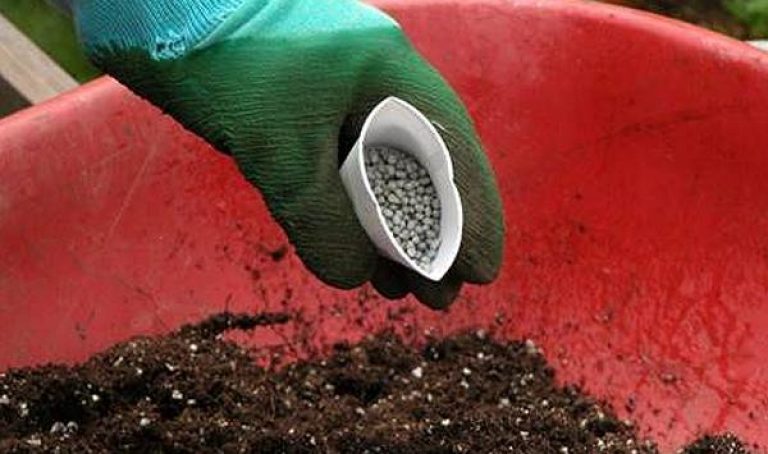
1.2 How and when to deposit?
Potassium nitrate is convenient in that it can be applied both under the roots of the plant and sprayed with a sprayer. Feeding begins in the spring and continues throughout the growing season. In areas with potatoes and cabbage, the application potash fertilizers, as a rule, is produced during hilling, when the tops have reached their peak of development.
Beneficial Potassium Plant Support after the beginning of budding and before fruit ripening. At this stage, a minimum flow of nitrogen into the soil is desirable. Potassium nitrate meets this requirement: 13% nitrogen accounts for more than 40% potassium.
It is advisable to carry out root top dressing 2-3 times per month, foliar top dressing - 2-4 times during the growing season.

The dosage of fertilizer depends on the type of crops:
- for flowers - 1.5 g per liter of water;
- for tomatoes, others vegetable crops- 1 g per liter of water;
- for raspberries, strawberries, strawberries, gooseberries, currants - 1-2 g per liter;
- for ornamental shrubs - 1 g per liter;
- for fruit trees - 2.5 g per liter.
Top dressing with a 2% solution of potassium nitrate involves the use of a sprayer. It is more convenient to measure fertilizers, starting from the number of liters per square meter of area.
For berry bushes this ratio is easiest to remember - a liter per square meter. For flowers, vegetables, strawberries, 0.7 liters per square meter is enough. m. In the garden, you can navigate based on the age of the trees: young seedlings have two liters, adults - up to 8 liters per plant.
1.3 Fertilization (video)
2 How to make potassium nitrate yourself?
In the Middle Ages, obtaining potassium nitrate suggested the presence of nitrate. Organic waste - manure, straw, ash - were collected in a pile, where they rotted. Nitrogen-rich organics, oxidized and processed by nitrifying bacteria, turned into saltpeter. This process was unhurried: the “ripening” of saltpeter took two to three years.
A simpler production of potassium nitrate was invented in the middle of the 19th century. This technology can still be used today to prepare the substance at home. You will need equal parts of calcium chloride and ammonium nitrate. The process itself is the simplest exchange reaction. No special device, no apparatus for work is needed - enough glassware, which can be found in any kitchen (three-liter jars, bottles).
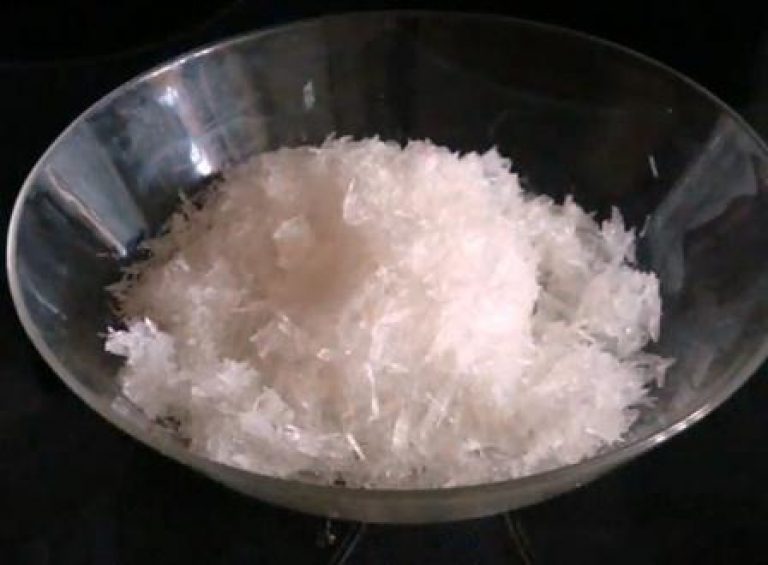
Instructions on how to make potassium nitrate at home are absolutely not complicated:
- Dissolve crystalline potassium chloride in hot water. For one part powder, you need two parts of water. Mix well, wait for the crystals to dissolve. If undissolved particles remain in the liquid, strain through a cotton cloth.
- Ammonium nitrate dissolves in the same proportion- to one part of ammonium nitrate, two parts of water.
- Pour two solutions into one container (jar), put it in a water bath. Wait for the appearance of needle crystals. The mixing process is best carried out in a well-ventilated area, with an exhaust hood.
- Cool the solution at room temperature. For final cooling, the jar can be placed in the refrigerator.
- Separate potassium nitrate from the rest of the solution You can use a funnel and a fabric filter.
- It remains to dry the crystals. You can do this on blank paper.
- In order to obtain a high purity product, one can recrystallize: once again dissolve the crystals in clean (distilled) hot water, filter the liquid product, cool, dry the precipitated crystals again.
For safety reasons, only clean utensils should be used. It is especially dangerous if soda residues or sugar get into the solution. A three-component mixture - saltpeter, soda, sugar - is the easiest recipe for creating pyrotechnic effects. Therefore, if the desired product has nothing to do with smoke bombs, you should be careful.
Potassium nitrate is convenient to store and easy to dose. Dissolving well, saltpeter can be used as a root dressing on open field, easy to apply to the leaves with a sprayer. If necessary, potassium nitrate can be made independently.
Potassium nitrate, the composition of which includes potassium and nitrogen, is one of the most popular potash fertilizers. It is good because, in comparison with other potassium-containing chemicals least harmful to the soil. Potassium nitrate has a very wide application, first of all, it is necessary flowering plants. It should be noted that her beneficial features have been noted for a very long time, and when there was no chemical production yet, the peasants made saltpeter themselves, mixing ash and manure.
ActionThe first question that we will consider is what potassium nitrate is for. Potassium and nitrogen are two of the three substances needed by any plant. In general, nitrogen has a huge impact on the development of the green mass of the plant, and potassium is necessary for abundant flowering and fruiting. Potassium nitrate contains both substances, and has a positive effect on the plant from the first days of life. First of all, the absorption capacity of the roots improves, that is, the plant “feeds” better - and this is a guarantee good harvest. In addition, the plant's respiration and photosynthesis process are optimized, which leads to an even development of the plant as a whole, while the tissues have a stronger structure, less prone to diseases.
ApplicationPotassium nitrate is a fertilizer that is used both as the main and for foliar dressings. Like all nitrogen-containing preparations, it is better to apply it to the soil in the spring, at the beginning of plant growth, at the rate of 20 grams per square meter. If you use other nitrogen preparations in addition to potassium nitrate (, etc.), then it is better to reduce their amount - an excess of even a very useful substance can lead to improper plant development.
Further, potassium nitrate is applied in the form of dressings, especially starting from the moment the buds appear and ending with the ripening of the fruits. The amount of nitrogen in it is small, so for fruit-bearing crops it is an ideal fertilizer option. Remember that it is better to refuse other nitrogen-containing fertilizers from the moment of flowering. For top dressing, 25 grams of saltpeter is diluted in 10 liters of water, watering is done every 10 or 15 days, depending on the soil and the condition of the plant. If there is a deficiency of potassium - for example, few buds are formed or the ovary does not develop well - then foliar top dressing from potassium nitrate is possible. To do this, the concentration should be slightly less - 25 grams per 15 liters, otherwise there is a risk of burning the leaves. This solution should be sprayed on the plant, it is better to do this in the evening or morning, when there is no sun, in dry, calm weather.
Potassium nitrate is a fertilizer that activates flowering and fruiting, therefore, for root crops and other crops in which vegetative parts are valued, it cannot be used as a top dressing. In this case, it is enough to add saltpeter to the soil in spring, and use fertilizers with a high content of nitrogen and a low content of potassium for top dressing, otherwise your potatoes may turn into a flower bed.
Security measuresPotassium nitrate is an oxidizing agent, it quickly reacts with various reducing agents and combustible substances, therefore 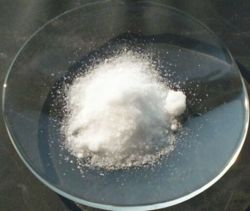 also used in pyrotechnics. This property must be taken into account when storing the fertilizer: the powder must be kept in a sealed package, and as far as possible from alkaline and flammable materials. In no case should saltpeter be placed near a heating system or even a light bulb. The ideal option is to purchase fertilizer in the required amount and use immediately.
also used in pyrotechnics. This property must be taken into account when storing the fertilizer: the powder must be kept in a sealed package, and as far as possible from alkaline and flammable materials. In no case should saltpeter be placed near a heating system or even a light bulb. The ideal option is to purchase fertilizer in the required amount and use immediately.
In the process of using potassium nitrate, the safety precautions are the same as for any chemical. Mandatory - rubber gloves, use only non-food utensils, and when foliar top dressing it will be useful to protect Airways respirator.
For most gardeners and farmers, the concept of "potassium nitrate" is well known. The chemical formula of potassium nitrate is KNO3. This chemical compound is a two-component fertilizer. It is produced in accordance with the requirements of GOST R 53949-2010 “Potassium nitrate. Specifications".
Potassium nitrate is used for various kinds soil, its composition works especially effectively in soil, which is too sensitive to chlorine. Vineyards, beds with potatoes, flax and tobacco are distinguished by such soils.
Potassium nitrate fertilizer consists of two main components, namely:
- . nitrogen (N-NO3) - 13%,
- . potassium (K2O) - 46%.
As you can see, the range of functions of this fertilizer is quite wide, but you should know for sure - what is potassium nitrate for?
Matter properties
This fertilizer is often used to feed vegetable plants, so the main properties of potassium nitrate are:
- . improving the development of the root system,
- . increase in growth and photosynthesis,
- . strengthening external plant tissue,
- . increased resistance to sudden temperature changes,
- . equalization of the number of basic elements that help the plant develop,
- . improves the external characteristics of root crops and fruits,
- . increasing the level of productivity.
- . preventing fruit cracking.
The dry composition of potassium nitrate is diluted with water, and poured under the plants. The use of this particular fertilizer is due to the fact that it contains less nitrogen, but 3 times more potassium.
The use of saltpeter and feeding features
The use of potassium nitrate in most cases is aimed at plant nutrition. This process can be either root or non-root.
Features of root dressing
- . for vegetables and flowers use 1.5 kg per 100 liters,
- . for ornamental plantations and berry bushes - 1-2 kg per 100 l,
- . for fruit trees - 2.5 kg per 100 l.
The process of root dressing can be done at intervals - 1 time in 2 weeks.

Features of foliar top dressing
Foliar top dressing represents only spraying of plants. Often, vegetable growers use a 2% solution of potassium nitrate.
- . for vegetables and flowers use 1 liter of solution,
- . for berry bushes 1.5 l per 1 bush,
- . for young seedlings of fruit trees - 1.5 2 liters of solution, and for mature ones - 5-8 liters.
Such processing can be carried out no more than 2-4 times during the entire growing season.
When should potassium nitrate be applied as a top dressing? The main application of this chemical compound is best done in April, the subsequent one can be taken in May, when the seeds are sown in the ground. In the summer months, potassium nitrate can only serve as a top dressing. But it is worth remembering that an excess of potassium and nitrogen can adversely affect the condition of plants and the crop as a whole.
If the gardener decides to feed fruit trees with potassium nitrate in the fall, then such a step will help the trees to endure the cold more easily. They will be more cold hardy.
Saltpeter preparation at home
Potassium nitrate at home is quite real, because the process of its creation is easy and simple. For "home" potassium nitrate you need:
- . potassium chloride,
- . ammonium nitrate.
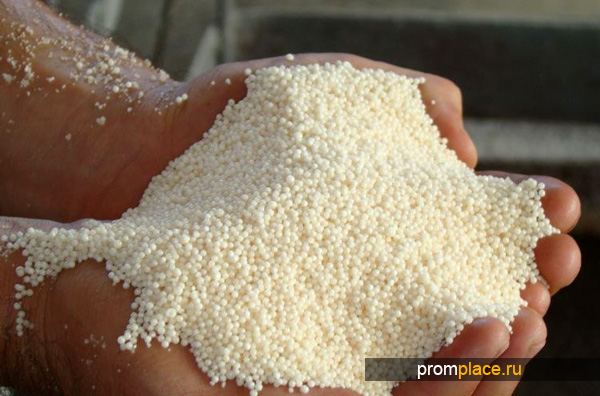
How to make potassium nitrate at home?
- 1. 100 g of crude potassium chloride must be diluted with hot distilled water (300-350 g). This whole process is recommended to be done in a glass bottle, during the mixing process, all particles of calcium chloride can be evenly dissolved.
- 2. The resulting liquid must be filtered through gauze. The result should be an almost clear solution with a pink tint.
- 3. Next, you need to heat the solution. When the first bubbles start to form. It is necessary to pour in ammonium potassium nitrate (95 g). Mix everything.
- 4. The resulting composition should boil for 3 minutes.
- 5. When the solution becomes completely transparent, it must be removed from the fire.
- 6. After a slight cooling, the solution must be poured into a container for final cooling. This process will take approximately 2-3 hours. The resulting solution should gradually cool down. At this stage, it should never be sent to the freezer.
- 7. After 2-3 hours, it is advisable to send the solution to the refrigerator, also for 2-3 hours
- 8. After this time, the solution must be transferred to the freezer, where the temperature should not be higher than 0 degrees.
- 9. After 3 hours, a precipitate forms in the container, which will be potassium nitrate. It will be at the bottom, so the top layer of water must be carefully drained.
- 10. The resulting precipitate must be dried on paper. This process will take 3-4 days.
- You should get about 50-60 grams of potassium nitrate. During the whole process, it is better to use only clean and washed dishes. This will help to obtain a pure chemical product.
This option would be an excellent solution if the gardener does not know where to get or buy potassium nitrate. But often it is in the consolidated sale in any gardening store. Of course, an independent process for obtaining potassium nitrate will be more economical.
It is worth paying attention to the combination of potassium nitrate and sugar. This combination is explosive. It is strictly forbidden to use it at home.
The price for 1 kg of potassium nitrate in the retail market can be from 150 rubles. This price is set for technical potassium nitrate, grade B. Wholesale prices for this fertilizer range from 60,000 rubles to 75,000 rubles per ton.
This substance has established itself as an effective fertilizer, so it is often used to improve the quality of the soil, as well as the growth and development of plants. Potassium nitrate is widely used in agricultural work, both in the fields and in private gardens.
Potassium nitrate belongs to the category of mineral additives and has the following chemical formula: KNO3 (respectively, the main elements that make up the substance are potassium and nitrogen). The most common use of this substance is as a fertilizer - it is feeding crops that do not tolerate chlorine. This is due to the fact that it actively supplies the soil layer with nitrogen compounds, while neutralizing the elements of chlorine.
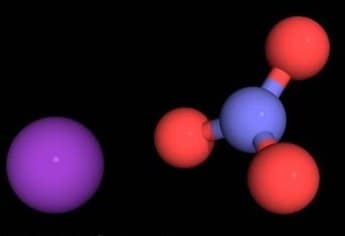 Potassium nitrate formula
Potassium nitrate formula As mentioned above, this fertilizer is most common in agriculture. In garden and garden plots, they are fed with berry crops, carrots, beets, as well as tobacco and grapes.
Potassium nitrate is considered one of the most the best fertilizers. The nitrogen contained in it contributes to the rapid and good growth of horticultural, vegetable and ornamental crops; potassium has a positive effect on the roots, which allows plants to absorb more nutrients from the soil layer. Also, potassium nitrate, catalyzing a variety of biochemical reactions, improves the cellular respiration of vegetation, which, in turn, improves immunity and helps crops avoid diseases. All this significantly increases the yield.
How to improve productivity?We are constantly getting letters in which amateur gardeners are worried that due to the cold summer this year, a poor harvest of potatoes, tomatoes, cucumbers, and other vegetables. Last year we published TIPS about this. But unfortunately, many did not listen, but some still applied. Here is a report from our reader, we want to advise plant growth biostimulantswhich will help increase the yield by up to 50-70%.
Read...
A little about the content of potassium nitrate and its properties
As already mentioned, potassium nitrate contains two main active elements that nourish the vegetation. A distinctive feature of this mineral fertilizer from others is its "potassium content" - the composition contains much more potassium than nitrogen (44 percent to 13). This allows the use of fertilizer even at the end of the vegetative period: a small amount of nitrogen is not able to cause a rapid growth of green mass, but together with the potassium it contains, it will help fruit development - that is, as a result, the quality and taste of the crop will increase, as well as its total quantity will increase.
The physical properties of potassium nitrate are as follows: it is a small, brittle whitish crystals (the most common type of this top dressing sold in stores). Sometimes it is sold in the form of a powder of the same color, which does not tolerate storage well, cakes, so packages with this product must be airtight. This additive is very soluble in the aquatic environment, so solutions are often made with it for the treatment of horticultural and horticultural crops.
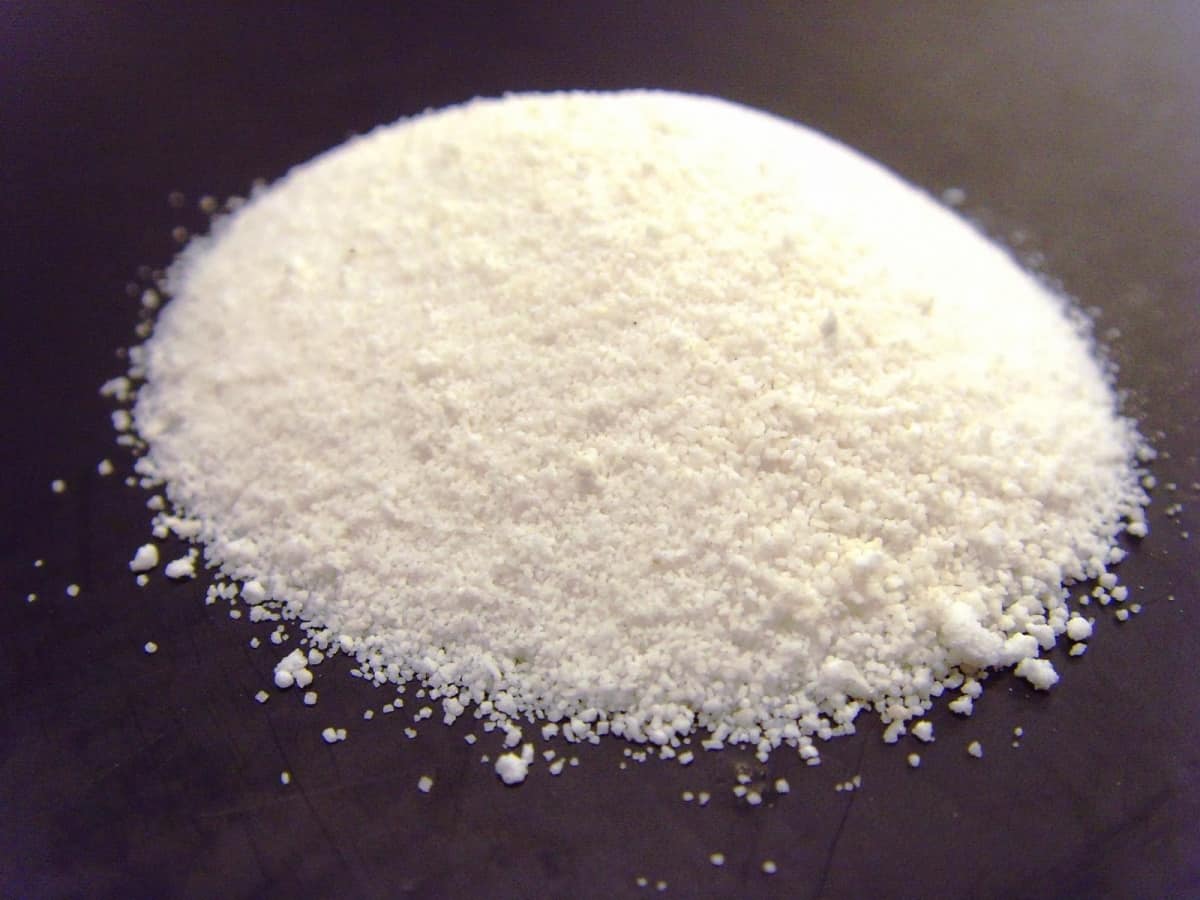 Potassium nitrate
Potassium nitrate Potassium Nitrate Applications
It should be noted right away that this substance finds its application not only for plant nutrition - technical potassium nitrate is actively used in industry.
Application in the agricultural field
This additive is used when carrying out root and foliar dressings. This substance has the greatest positive effect on the development of various root crops, including carrots, beets, and berries. The use of potassium nitrate for plants such as potatoes, various greens, radish is an overly irrational solution (potatoes, for example, “love” phosphorus-containing additives). A greater effect can be obtained if this top dressing is used for fruit and berry crops - the harvest will be tasty, impressive in size and well stored.
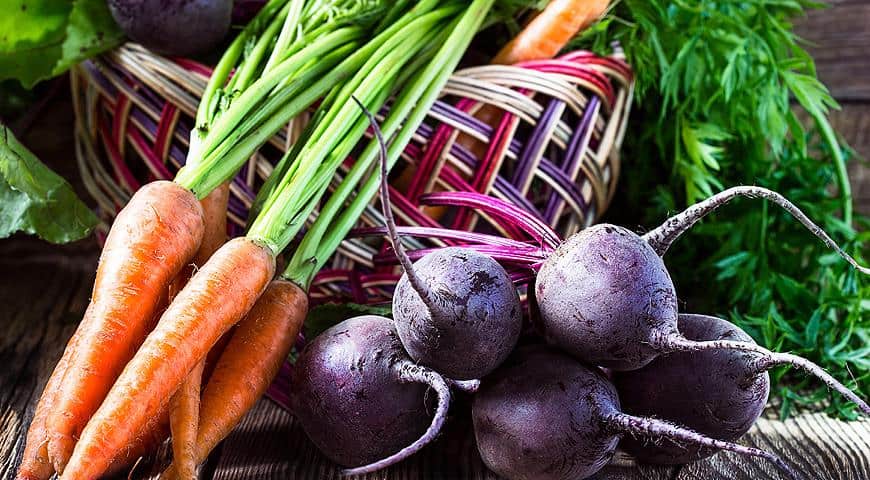
This supplement can be used in both solid and liquid form. The second state is used more often due to the fact that this way top dressing gets to the roots of plants faster. To do this, you will need to prepare a solution with the following proportions, and then spray:
- For feeding ornamental crops and flowers - 15 grams of additive per 10 liters of water mass;
- For berry bushes - 20 grams per 10 liters;
- For fruit trees - 25 grams per 10 liters.
This composition is suitable for root dressing. For foliar, a more concentrated liquid is needed: approximately 25 grams per 10 liters of water mass.
During the summer, such spraying in the garden should be done 2 to 4 times. In this case, the last "session" should be made three to four weeks before harvest.
Engineering and Potassium Nitrate
Potassium nitrate is actively used in various processes in the manufacture of glass. In addition, this substance is part of black powder, is involved in the production of enamels and thermal salts.
Attention! Potassium nitrate is used as a preservative in the food industry.
Methods for obtaining potassium nitrate
How to make potassium nitrate yourself
This fertilizer is obtained in several ways (for example, from sodium salt):
- In the process of neutralization between alkaline compounds and nitric acid;
- In the interaction of sodium salt and potassium oxide;
- With the same reaction, but between oxides of nitrogen and potassium.
Thus, potassium nitrate is a substance that finds application in various fields - agricultural, technical, food.
And a little about the secrets of the Author
Have you ever experienced unbearable joint pain? And you know firsthand what it is:
- inability to move easily and comfortably;
- discomfort when going up and down stairs;
- unpleasant crunch, clicking not of their own free will;
- pain during or after exercise;
- inflammation in the joints and swelling;
- causeless and sometimes unbearable aching pain in the joints ...
Now answer the question: does it suit you? Can such pain be endured? And how much money have you already "leaked" for ineffective treatment? That's right - it's time to end this! Do you agree? That is why we decided to publish an exclusive interview with ARMEN DZHIGARKHANYAN, in which he revealed the secrets of getting rid of joint pain, arthritis and arthrosis.
Attention, only TODAY!
Many familiar substances that we often use in everyday life have certain scientific names. First of all, this applies. All of them are obtained as a result of certain reactions, and the conditions for mass production are created at the factories. This also includes potassium nitrate, which can be considered a fairly popular and widely used substance.
It has many names - potash potassium, but it is better known as This is a technical name used in scientific circles and various industrial fields.
The main area of application of this substance is Agriculture. This is one of the best and most famous fertilizers you can find today. Potassium nitrate is a double complex fertilizer, which can be used for various soils and cultivated crops. Especially often saltpeter is used for growing crops that are highly sensitive to chlorine. These include tobacco, flax, grapes and potatoes. All these are quite popular and common agricultural crops.
The composition of this substance:
- N (Nitrogen) - 13%
- K (Potassium) - 46%
These are the two substances that make up potassium nitrate, the formula is KNO3.
Application features
Among such common fertilizers as potassium nitrate, the application is usually not limited by strict rules. And this is one of the main advantages. However, there are still some features.
Saltpeter, first of all, should affect the root system. Top dressing occurs at intervals of 1 time in 10-15 days. However, there is also a foliar method of application, in this case, the leaves are sprayed with a special solution of 1.5-2%. During the growing season, 2 to 4 sprays are recommended.
It usually takes 1.5-3 liters of solution for small trees and shrubs, and up to 8 liters for an adult tree. Vegetable and fruit plants, such as, for example, strawberries, require about 1-1.5 liters of solution for every 10 square meters. meters.
The effect of the application
Potassium nitrate - nitrogen-potassium fertilizer, which gives very effective results when fertilizing various plants and crops: vegetable, flower, fruit and ornamental.
Potassium nitrate is especially good for strengthening the root system and increasing its sucking power. In fact, this Chemical substance improves all the basic functions of the plant: nutrition, respiration and photosynthesis. All this as a whole leads to the strengthening and healing of the whole plant, the condition of its tissues improves markedly. The plant is able to better adapt to environmental conditions and can survive even relatively long periods of bad weather.
Another effect that can be achieved is an increase in the content of potassium and nitrogen in plant tissues. These two elements directly affect appearance not only plants, but also its fruits. They turn out to be more attractive, cracking and other damage is reduced, and the yield becomes higher.
This is especially true for crops such as potatoes and cabbage. In this case, the appearance of the root crop is a very important parameter. Usually top dressing occurs when hilling these plants. At the same time, it is necessary to avoid a large amount of nitrogen, and potassium nitrate has the necessary advantage compared to other popular fertilizers - nitrogen is contained here 3.5 times less than potassium.
All this makes the scope of saltpeter very wide. It has excellent properties, has no special restrictions in use, and is quite easy to use. With the right approach, it can give very impressive results when growing various crops.
